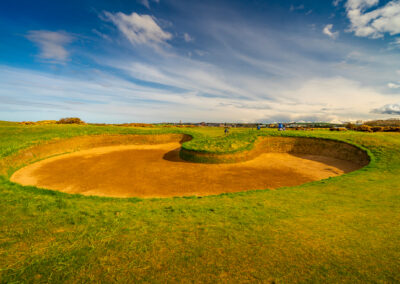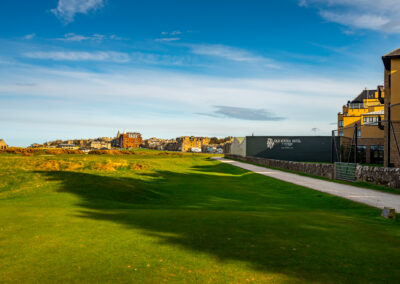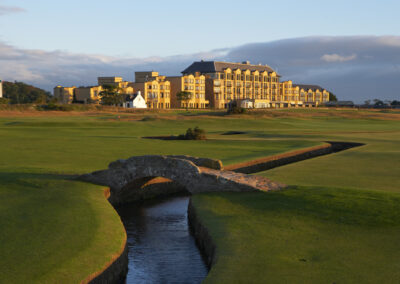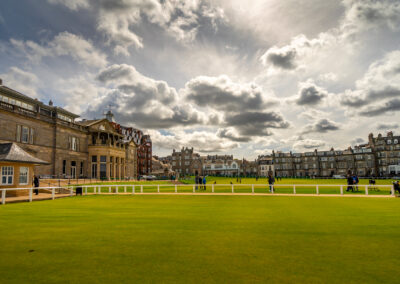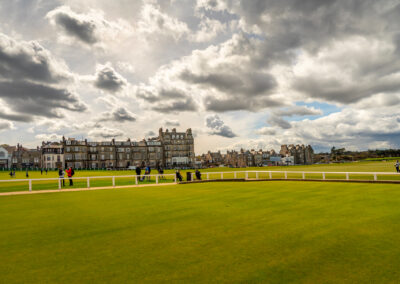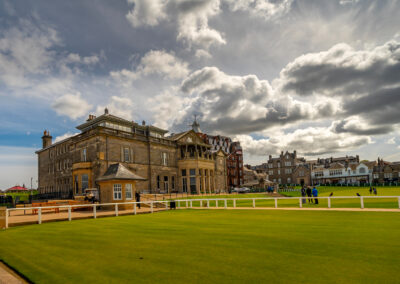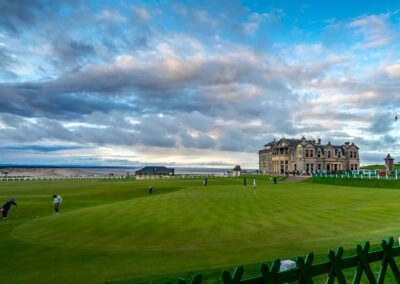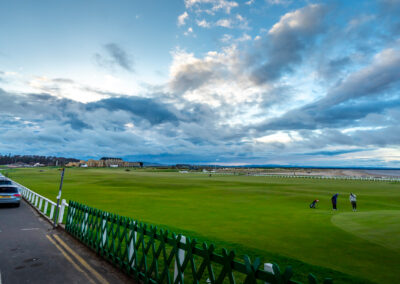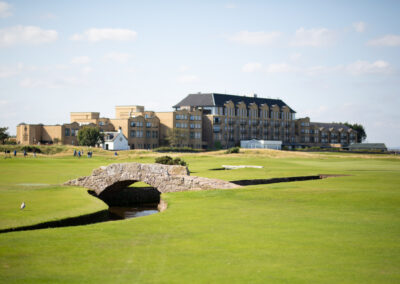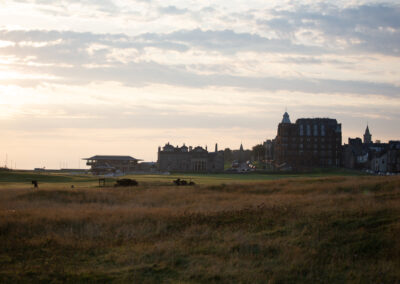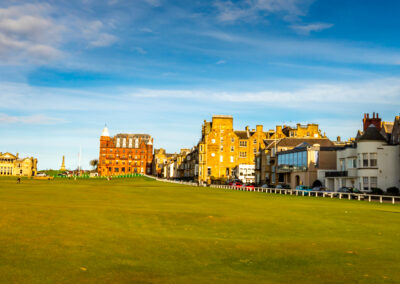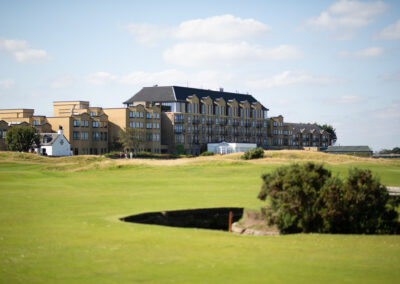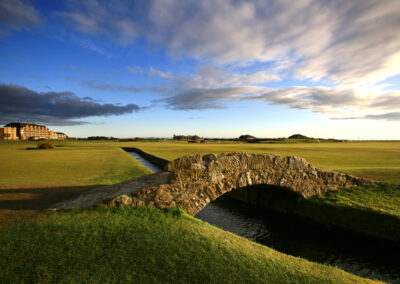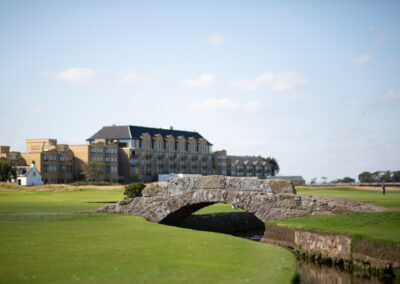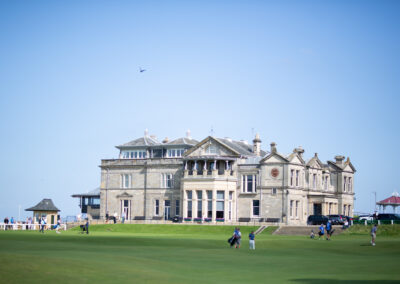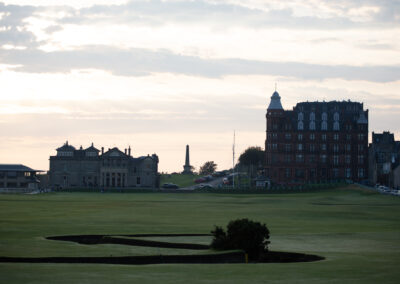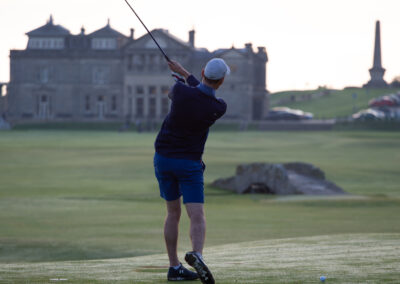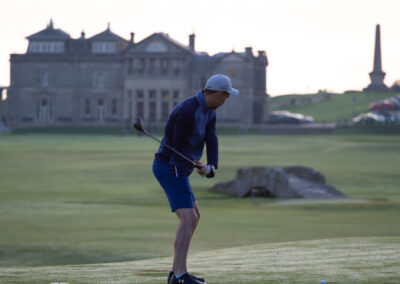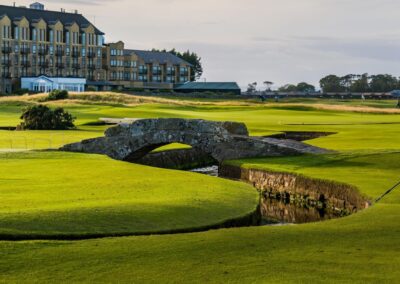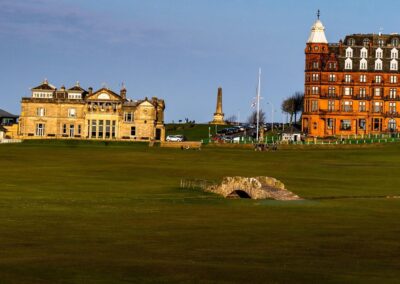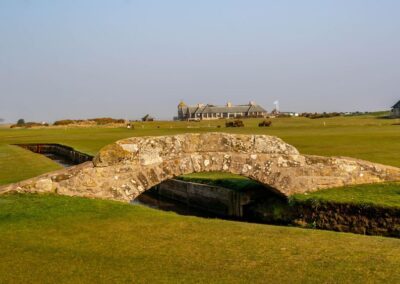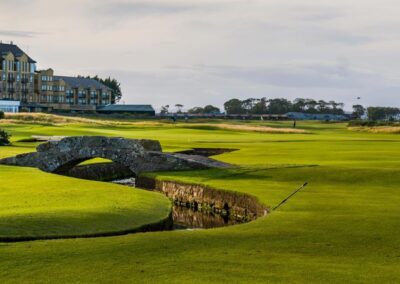Everything from the number of holes to the rules of golf and double greens to the size of the cup originates from one golf course…
Six centuries of golf
Golf has been played on the Links at St Andrews since 1400 AD and the Old Course is known around the world as the home of golf. The popularity of the game grew and in the 19th century it became part of the lives of many locals, whether as players, caddies, ball or club makers. Golf still plays a significant role in the culture and economy of St Andrews today. Over its 600 year history, one simple course that ran through ravines and heather has evolved into seven public golf courses that attract hundreds of thousands of golfing pilgrims from all over the world. St Andrews Links is the largest golf complex in Europe and all six 18-hole courses can be booked in advance.
The six courses include the New Course, Jubilee Course, Castle Course, Strathyrum Course, Eden Course and Balgove Course.
Golf prohibited
Golf was apparently becoming too popular in the Middle Ages, as King James II of Scotland banned the game in 1457, believing it to distract young men from archery. This ban was repeated by subsequent monarchs until James IV threw in the towel and became a golfer himself in 1502.
From 22 to 18 holes
The Old Course originally consisted of twenty-two holes, eleven out and eleven back. After completing a hole, the player would hit his ball within two club lengths of the previous hole, using a handful of sand scooped from the hole that formed the tee. In 1764 the St Andrews Golfers’ Society, which later became the Royal and Ancient Golf Club, decided that some holes were too short and combined them. This shortened the course to eighteen holes and created the standard round of golf in the world.
A ROYAL AND ANCIENT GOLF CLUB
In 1754 the Royal and Ancient Golf Club was founded under the original name of the Society of St Andrews Golfers. Originally made up of 22 noblemen, professors and landowners, the club now governs the rules of golf everywhere except the USA. The club also hosts the Open Championship and major amateur championships. The New Course was built in 1895 by the R&A.
Double green
The fairway through the Whin bush on which the Old Course developed was so narrow that golfers played the same holes on the out and in. As the game became increasingly popular in the nineteenth century, it became common for golfers in different tournaments to play the same hole but from opposite directions. To relieve congestion, two holes were cut on each green; those for the first nine were marked with a white flag and those for the second nine with a red flag. This continues to this day, with the exception of the eighteenth, where a white flag is used. If you would like to know why the flag remains white on the 18th hole sign up for our historical golf quiz to find out more interesting facts about St. Andrews.
The direction of the game
When Old Tom Morris created a separate green for the first hole, it was possible to play the course counterclockwise, not clockwise as it had been previously. For many years, the course was played alternately clockwise and counterclockwise, but now the accepted playing direction is the right-hand circle, i.e., counterclockwise. However, many of the 112 bunkers on the course are clearly designed to catch the errant shots of golfers playing on the left. Today, the Old Course can only be played in the opposite direction in November on St. Andrew’s Day.
The championship course
The Open Championship was first played on the Old Course at St Andrews in 1873. In 2015, the Old Course hosted the 29th edition of the world’s most important golf event, making it more often held in St Andrews than anywhere else. In modern times, the Dunhill Cup and subsequent Dunhill Links Championship has been played at St Andrews since 1985, while the Walker Cup, the Amateur Championship and a host of other professional and amateur competitions for men and women are held on the legendary links at the home of golf.
Rabbit Wars
In 1797, due to ‘temporary insolvency’, i.e. bankruptcy, the St Andrews Town Council lost complete control of the Links course, allowing the rabbit breeding industry to take a stand against golf. The twenty-year legal and physical war between the golfers and the rabbit breeders ended in 1821 when James Cheape of Strathtyrum, a local landowner and keen golfer, bought the land and by his own estimate ‘saved the Links for golf’.
First Detention Act
St Andrews Borough Council acquired the Links site in 1894 after Parliament passed the first Links Act, providing public access for local residents and visitors. The council built the Jubilee Course in 1897 and the Eden Course in 1914.
ST ANDREWS LINKS TRUST
In 1974, following the dissolution of the Town Council as a result of local government reform, a further Act of Parliament established the St Andrews Links Trust to continue to operate the Links golf course as a public course open to all interested parties. The opening of Strathtyrum in 1993 brought the total number of eighteen-hole courses to five, together with one nine-hole course at Balgove. A large golf training centre was opened in 1993. In 1995 the first clubhouse in St Andrews open to the public – the Links Clubhouse at the Old, New and Jubilee courses – was opened. This was followed in 2000 by a second Eden Clubhouse for golfers at the Eden, Strathtyrum and Balgove courses, creating the largest public golf complex in the world. As demand for play on the Links continued to grow, a seventh course, The Castle Course, opened in 2008.Our company is a proud partner of St. Andrews Links (Authorised Dealer of Playing Times on the Old Course) and because of this, we are able to buy guaranteed playing times directly from you without any third parties or other resellers.Photo gallery
Video
| World ranking | 4 |
| Architect | Unknown |
| Year of foundation | 1552 |
| Par Course | 72 |
| Number of holes | 18 |
Weather conditions



